If you think about it, every action has a reaction is a concept that can be applied to everything beyond Physics. Throughout history, every architectural style has been a reaction to a certain ongoing situation. A very quick simple example is Modernism and Postmodernism or Romanesque and Gothic Architecture. Art Nouveau architecture is no exception, it was a dreamscape architects adopted to detach from the conventional Neoclassical architecture.
This style has its own charm to make you fall in love with its aesthetic. Heavily inspired by the mesmerizing allure of nature, Art Nouveau buildings flow with the curves of vines and flowers. Often, the aesthetic effect seems too absurd to grasp, but upon second look it becomes captivating. This article will explore this dreamy style, delving into its origins, pioneers, main characteristics, and most fascinating examples. If you’re a lover of art, gardens, and anything in between, I believe you will enjoy this.
Origins and Influence of Art Nouveau
Art Nouveau is a French word that translates to “new art”. It emerged in the late 19th century (between the 1890s and early 1900s) primarily in Belgium and France – so the French naming makes sense. To add a bit of context, at that time the architectural landscape was saturated with a historical language, particularly Neoclassicism and Victorian styles. At one point architects were fed up with the rigid and strict rules of symmetry and perfection. Which is why they sought to reflect upon nature and the industrial age of the time to create something more organic, more original, and intrinsically “new”.
One other major factor that influenced the rise of Art Nouveau is the Industrial Revolution. With it came new materials like iron, steel, and glass, along with interesting ways to manipulate and forge them; it immensely sparked the creativity of architects. Art Nouveau even drew inspiration from the craftsmanship of the Art and Crafts movement, but where its precedent rejected industrialization and mass-production, Art Nouveau embraced it in a creative way.
The Expansion of Art Nouveau
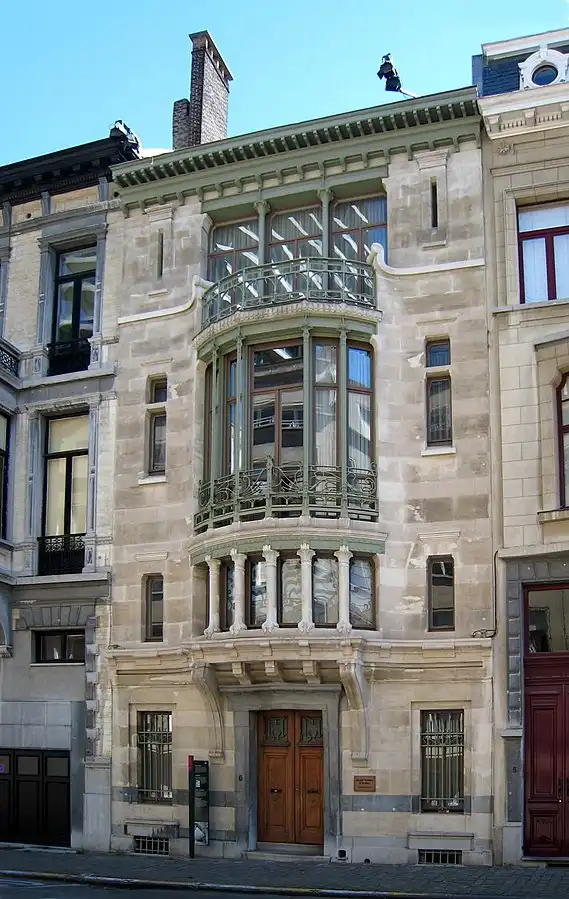
Architects like Victor Horta in Belgium and Hector Guimard in France became pioneers of the movement, with their designs and philosophies transforming the fabric of architecture. The style was so captivating and quickly spread across Europe and America, so it became known by various names. Jugendstil in Germany, Modernisme in Spain, and Stile Liberty in Italy. Essentially, the driving philosophy remained the same—to infuse art into every aspect of life in new unconventional ways.
Victor Horta is often credited with building the first true Art Nouveau structure, the Hôtel Tassel in Brussels (1893). Horta’s use of flowing lines, glass, and iron set a precedent for future Art Nouveau works. Another influential figure was Hector Guimard, whose designs for the Paris Metro entrances (1900) became an iconic example of the movement. In Spain, Antoni Gaudí took the style to new heights with projects like the Casa Batlló, blending organic forms with colorful mosaics.
By World War I, Art Nouveau had begun to fade, replaced by the more streamlined and industrial styles of the early 20th century, such as Art Deco. However, its influence on architecture, design, and even modernist movements remains undeniable?.
Characteristics of Art Nouveau Architecture
The main philosophy of Art Nouveau Architecture is that it blends art, nature, and industrialization to create a rather surreal aesthetic in buildings. It calls for a harmony between art and life, with a passionate embrace toward fluid, stylistic, and organic forms. You can think of it as that style that first tried to create something beautiful or just “new” from the technology of its time.
Key Characteristics of Art Nouveau:
- Organic, flowing lines inspired by natural forms like vines, flowers, and leaves.
- Use of iron, glass, and steel in innovative ways to create light-filled spaces.
- Decorative details: Stylized motifs of flora and fauna, such as insects, plants, and animals.
- Asymmetry: A break from traditional balance, embracing fluid and dynamic forms.
- Stained glass and mosaic work for colorful, artistic embellishments.
- Handcrafted elements, emphasizing artistic craftsmanship even in mass-produced materials?
Difference Between Art Nouveau and Art Deco
Art Nouveau and Art Deco are often confused because they seemingly appear to draw from the same inspirations in nature. Art deco is very playful with precedent motifs and historical references, and Art Nouveau doesn’t shy away from embracing every floral pattern it can embody. However, if you take a deeper look, you will find huge differences between the two styles.
The age of technology in both eras hugely impacted the way architects were influenced. During the industrial age, artists and designers were first encountered with the idea to bend and ornate with steel. So somehow it felt natural to create floral patterns and reference nature. Art Deco emerged in the roaring 1920s, an age obsessed with vanity, opulence, and status. Technology at that time was more advanced and materials were measured in terms of their luxury and value. People were obsessed with showing their power and earthly possessions, a lifestyle perfectly captured in The Great Gatsby.
As you can already tell, the driving force behind both styles is extremely different.
Art Nouveau’s natural inspiration led to buildings adorned with flowing curves, plant-like motifs, and hand-crafted decorative elements. It embraced asymmetry and often combined modern materials like glass and iron with nature-inspired shapes.
Art Deco, on the other hand, rejected the organic curves of Art Nouveau in favor of bold, geometric shapes, symmetrical patterns, and a streamlined aesthetic. This style was influenced by the technological advancements of the 20th century and the growing fascination with speed, machines, and modernity.
Examples of Art Nouveau Architecture
Lavirotte Building
Year: 1900
Location: Paris, France
Architect: Jules Lavirotte
The Lavirotte Building is a flamboyant example of Art Nouveau architecture. Designed by Jules Lavirotte, this building is renowned for its highly decorative facade, which won the prestigious Parisian façade competition in 1901. The structure is adorned with intricate sculptures and motifs inspired by the natural world, including floral patterns, animals, and sinuous, organic lines typical of the Art Nouveau movement. Lavirotte’s design combines various materials, such as ceramic tiles, stone, and ironwork, creating a dynamic and colorful exterior.The building’s most distinctive feature is its fantastically ornate entrance door, surrounded by sculptural work that blends the boundaries between architecture and art.
Casa Batlló
Year: 1904-1906
Location: Barcelona, Spain
Architect: Antoni Gaudí
Casa Batlló is a prime example of Art Nouveau, or Modernisme, in Spain. Located on Passeig de Gràcia in Barcelona, the building’s design is an ode to organic forms and the natural world. Gaudí reimagined the facade with wavy lines, vibrant mosaics, and a bone-like structure that seems almost alive, evoking the curves and shapes found in marine life.
The stone facade and mosaic tiles (known as trencadís) give Casa Batlló a fantastical appearance, while the building’s irregular oval windows and flowing balconies further emphasize its organic nature.The roof of Casa Batlló is often compared to the scales of a dragon, with tiles that shimmer in a range of colors. The building is now a UNESCO World Heritage Site and remains one of Gaudí’s most celebrated works?.
The Secession Building
Year: 1897-1898
Location: Vienna, Austria
Architect: Joseph Maria Olbrich
The Secession Building in Vienna is a bold statement of the Art Nouveau movement, specifically its Austrian variant, Jugendstil. Designed by Joseph Maria Olbrich, this building was conceived as an exhibition hall for the Vienna Secession, a group of artists who sought to break away from traditional academic art. The building’s most distinctive feature is its golden dome made of laurel leaves, which represents a victory over historicism. Its facade is minimalist, but it is punctuated with geometric forms and stylized natural motifs. The interior spaces are fluid, emphasizing simplicity and elegance, with a focus on natural light. The Secession Building reflects the core philosophy of Art Nouveau: a synthesis of art, architecture, and nature?.
Jubilee Synagogue
Year: 1906
Location: Prague, Czech Republic
Architect: Wilhelm Stiassny
The Jubilee Synagogue, also known as the Jerusalem Synagogue, is a vibrant blend of Art Nouveau and Moorish Revival architecture. Designed by Austrian architect Wilhelm Stiassny, this synagogue stands out with its bold, colorful facade that features red and white striped patterns, a large central rose window, and intricate stucco work. The design integrates Art Nouveau’s focus on naturalistic decoration, seen in the stylized floral motifs and organic forms, with elements from Moorish architecture, such as the horseshoe arches and exotic patterns.The use of vibrant colors and elaborate detailing in both the exterior and interior highlights the Art Nouveau emphasis on ornamentation and craftsmanship.
Majolikahaus
Year: 1898-1899
Location: Vienna, Austria
Architect: Otto Wagner
The Majolikahaus, designed by Otto Wagner, is one of the most iconic examples of Viennese Art Nouveau, known locally as Jugendstil. The building’s facade is its most striking feature, entirely covered with glazed ceramic tiles, known as majolica, which give the structure its name. These tiles were not only aesthetically pleasing but also practical, as they were easy to clean and maintain. The floral patterns on the tiles, bold, colorful, and repetitive, embody the organic, nature-inspired motifs that are central to the Art Nouveau style. Majolikahaus is a perfect example of how Art Nouveau embraced both beauty and utility, marrying artistic flourishes with modern architectural principles.



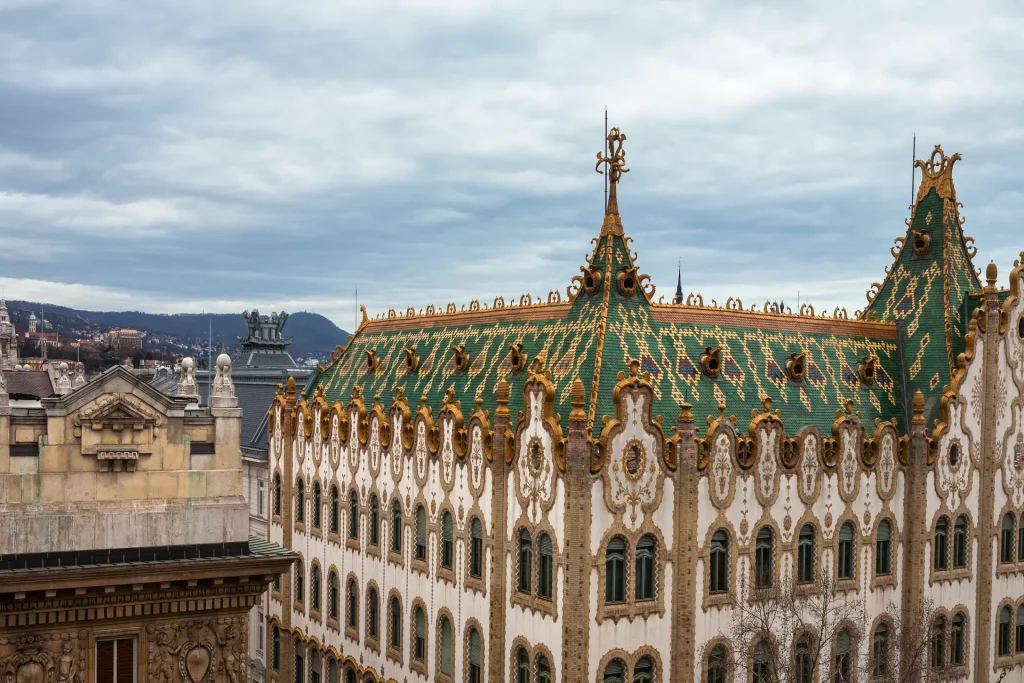

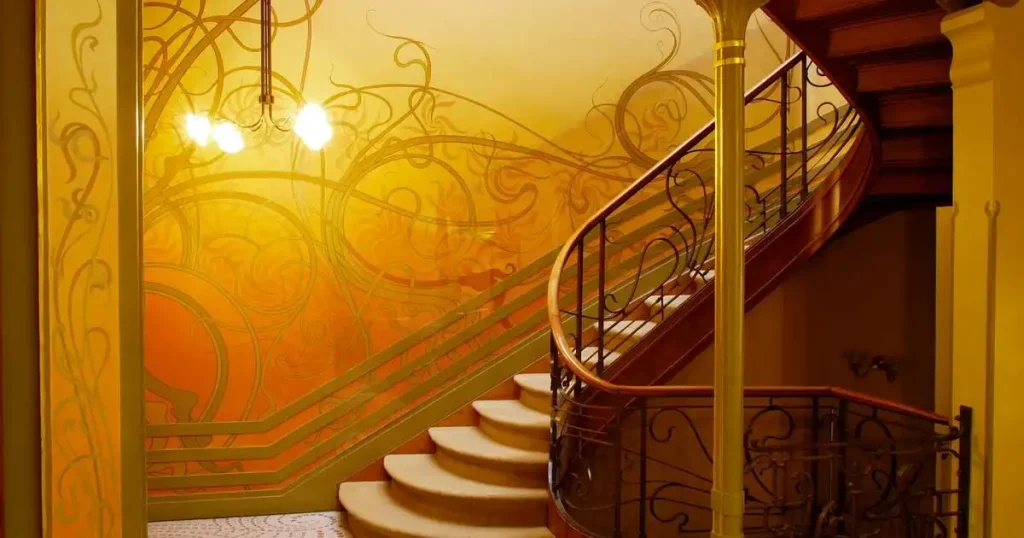



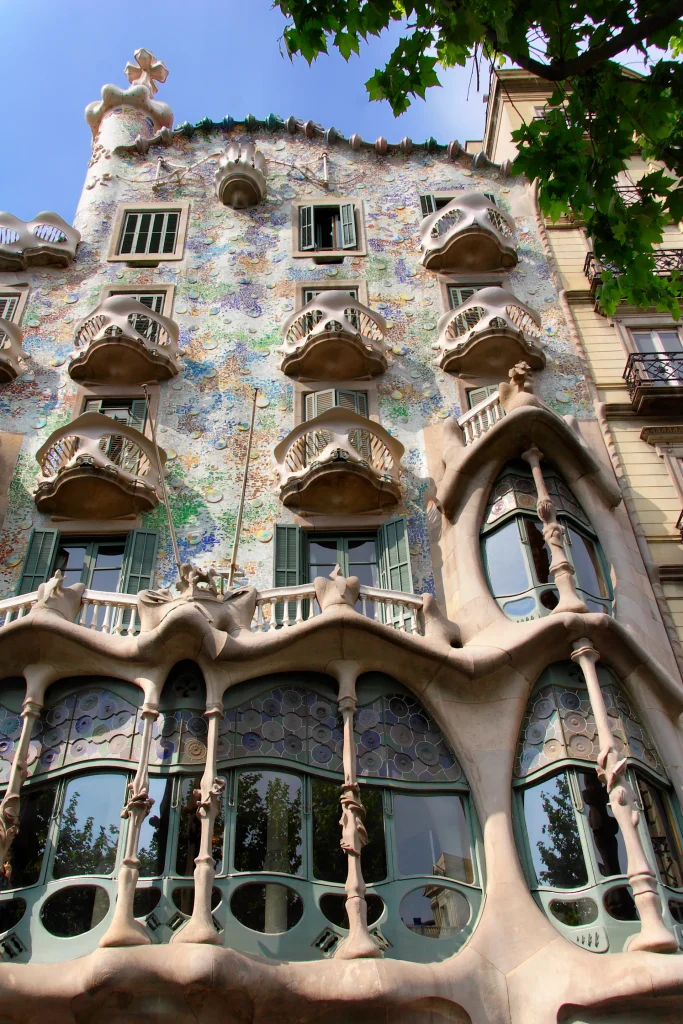
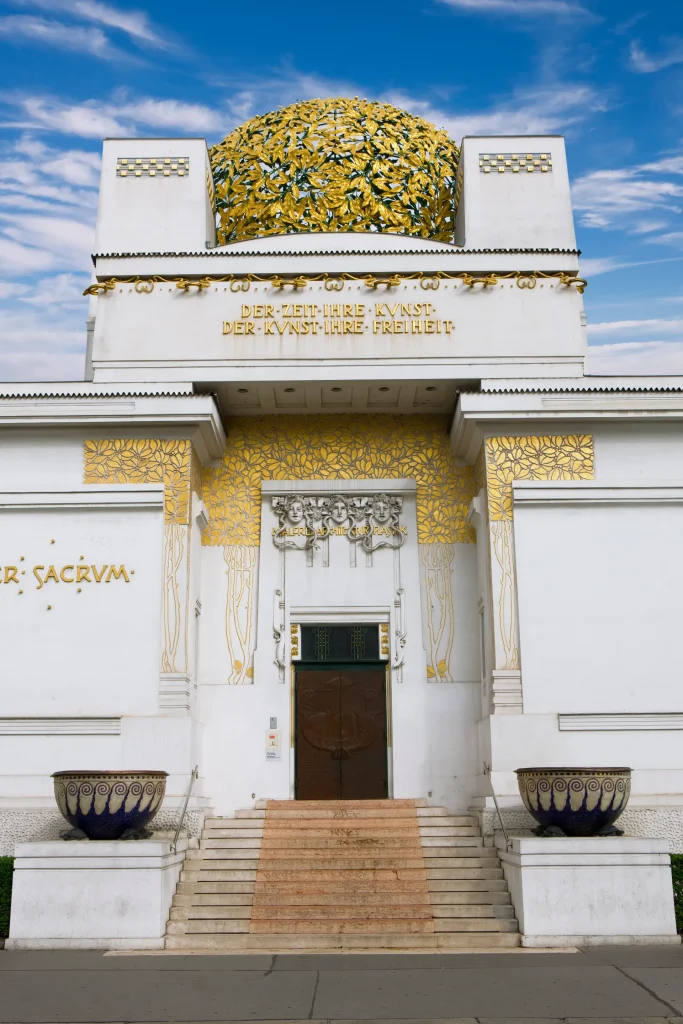
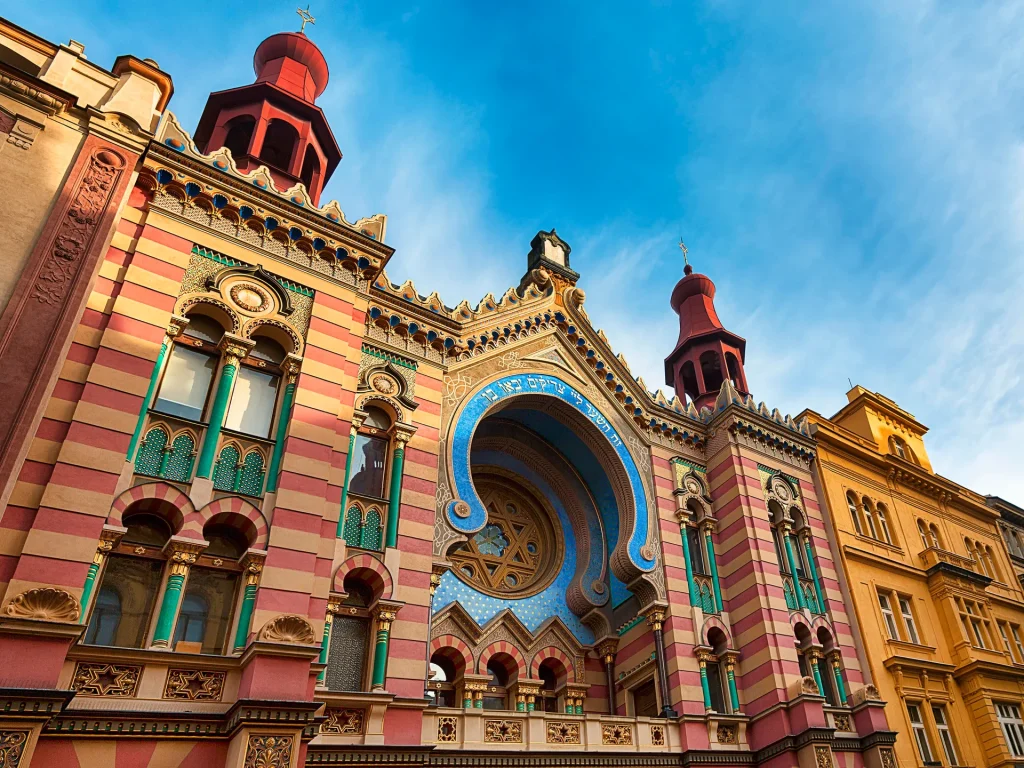
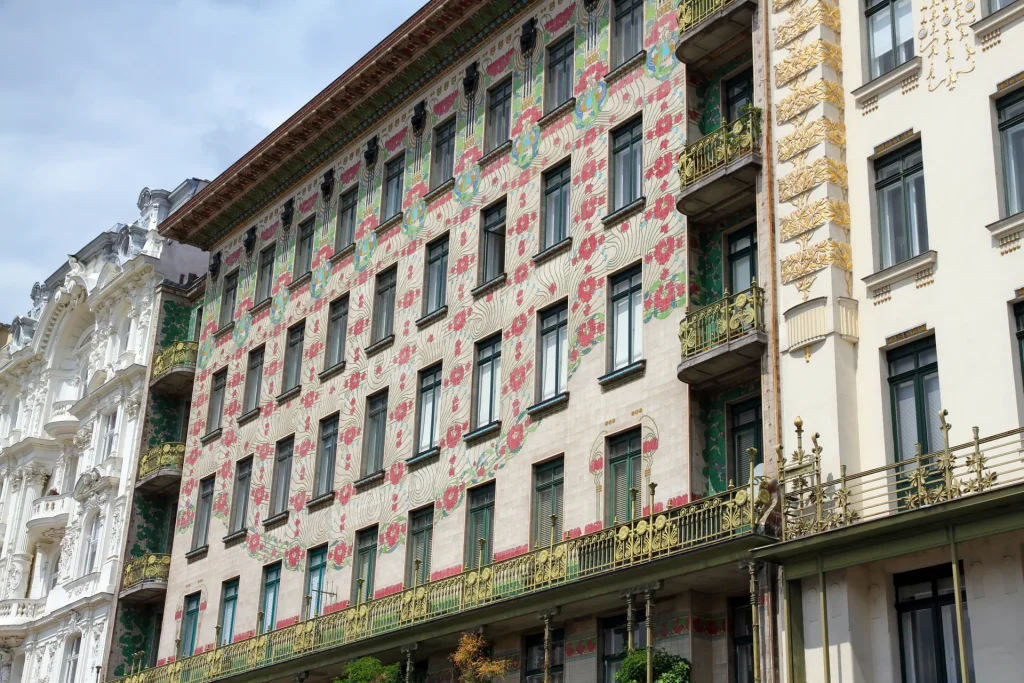


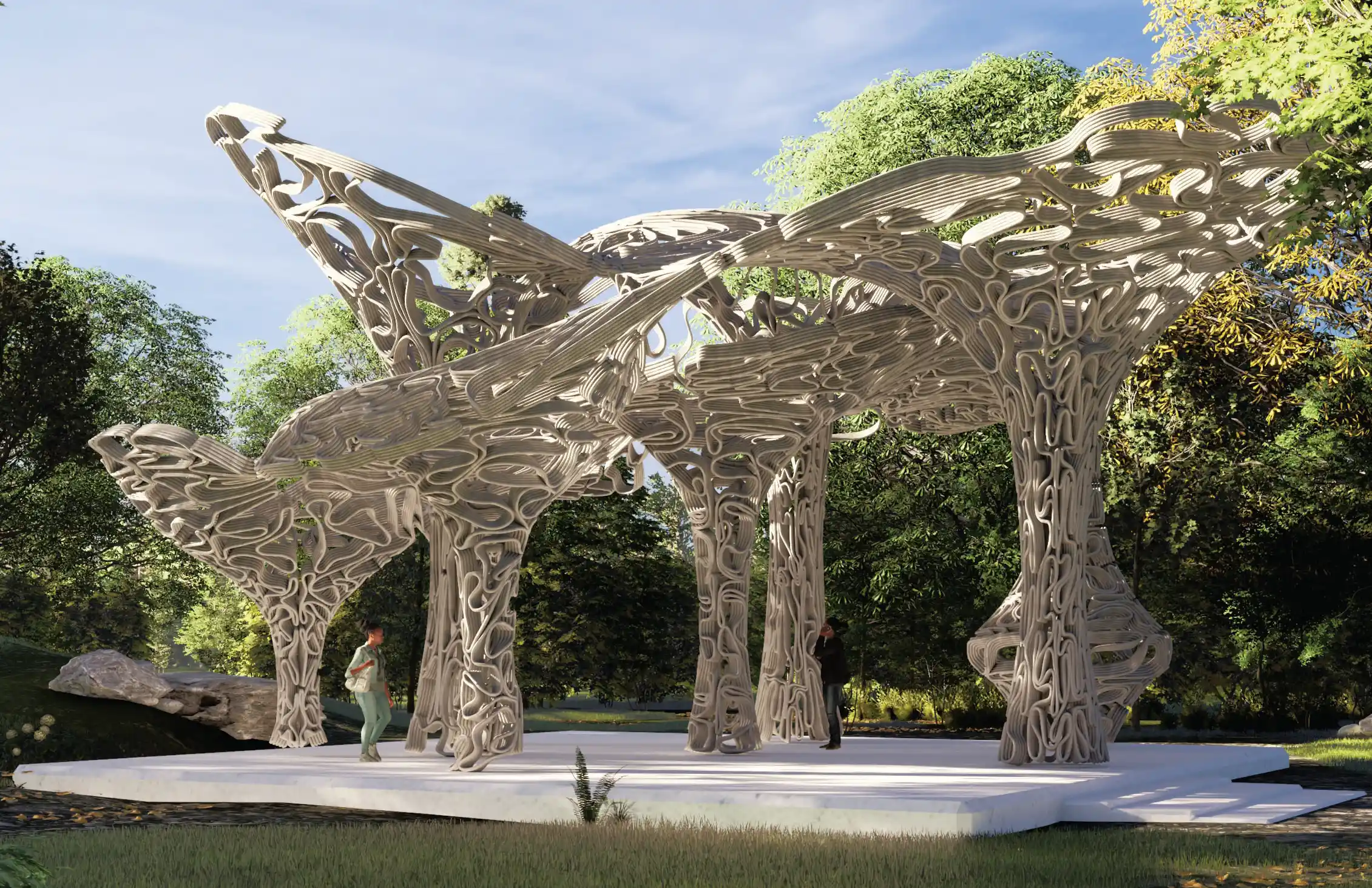
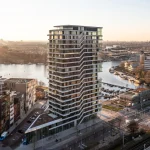









Leave a comment